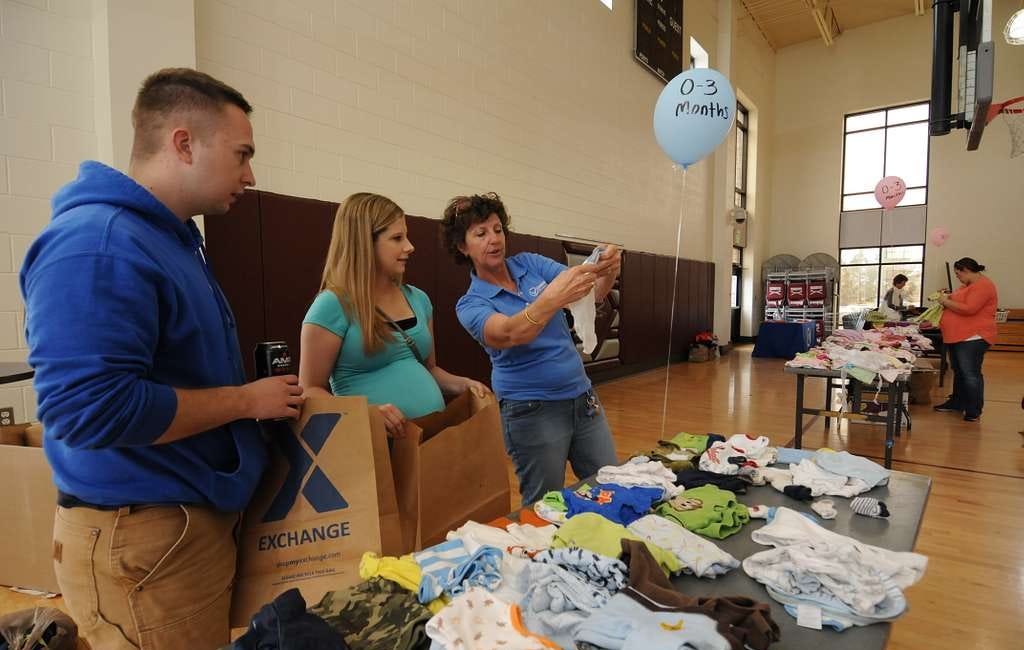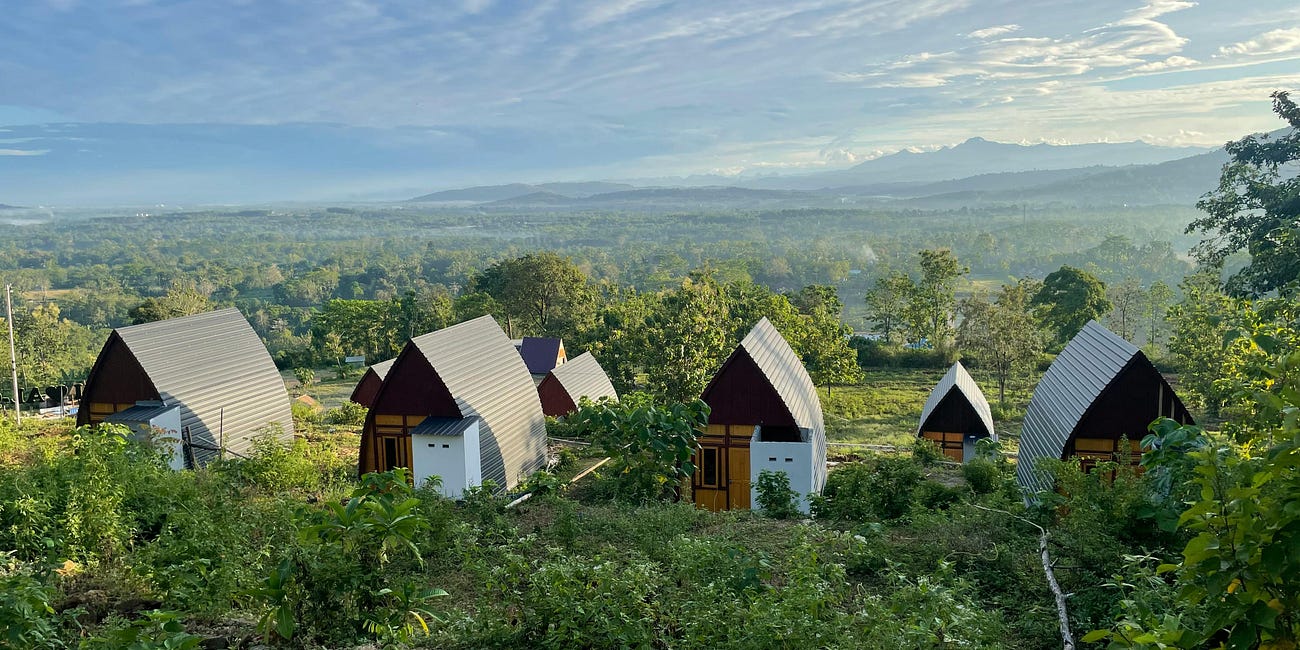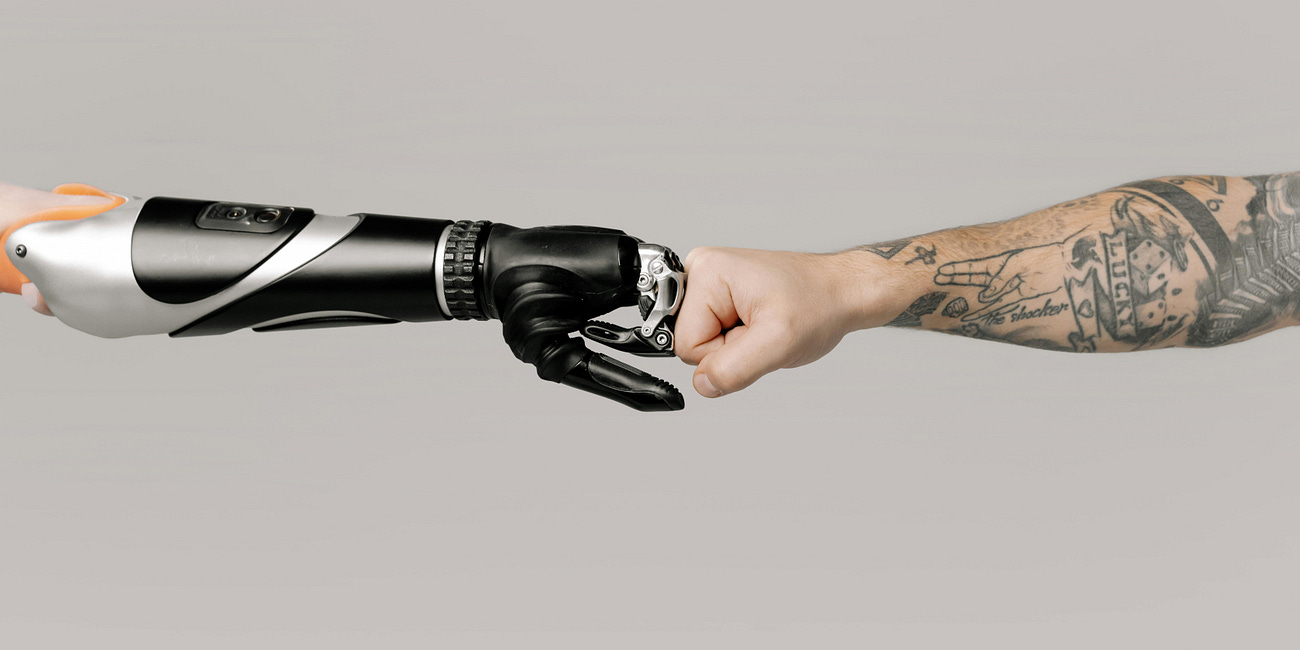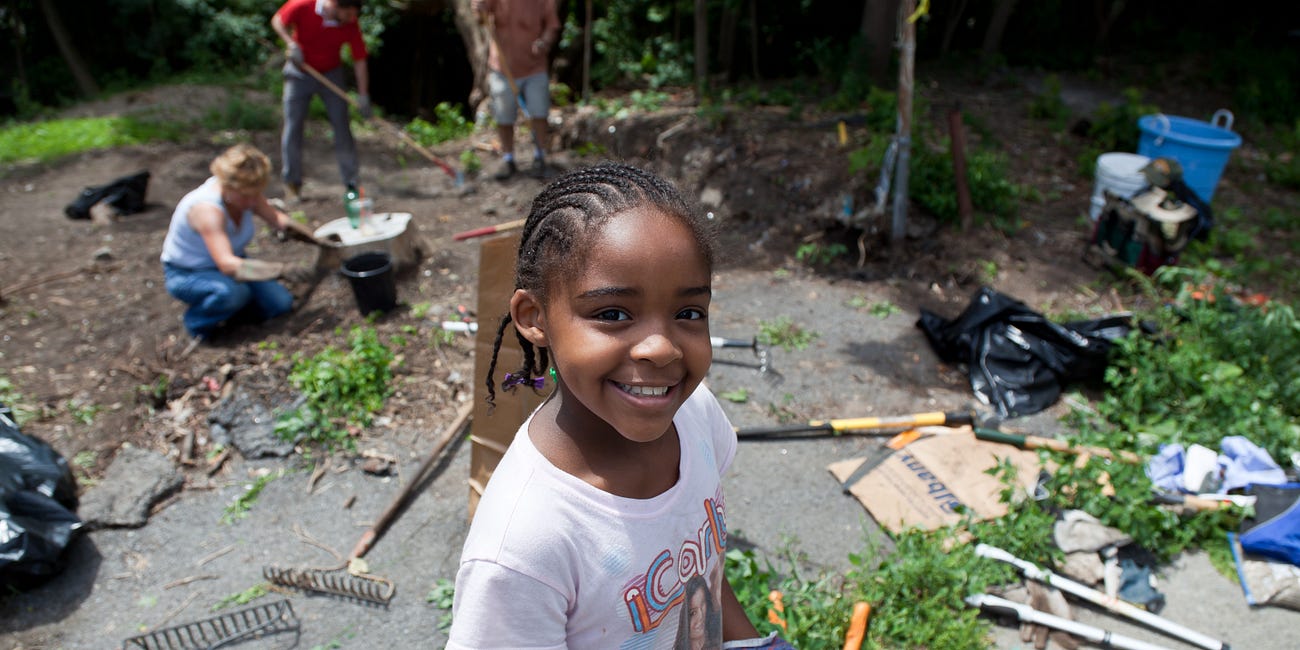We live in a time of deep fracture, ecological collapse, authoritarian resurgence, mass displacement, and economic precarity, so we don’t have the luxury of waiting for someone else to fix it. Nor can we afford to believe that simply resisting what harms us is enough. The world we need will not be negotiated into being. It must be built, deliberately, relationally, and from below.
Over the past 2 months, I’ve been laying out a set of forty step-by-step guides for prefigurative community building. Each one is a detailed, grounded invitation to begin something now. They’re not proposals for the distant future. They’re blueprints for what already wants to emerge.
These are Power With coordination patterns: small-scale, replicable, deeply participatory projects that sidestep Power Over dynamics. They prioritize relationships over control, care over coercion, interdependence over extraction. Each one includes practical steps, embedded values, real-world examples, and resource links. They range from mutual aid kitchens to community land trusts, from solidarity funds to cooperative governance, from distributed decision-making to restorative practices rooted in metamorphic justice.
What unites them is a simple premise:
we don’t need permission to begin.
You don’t need to be an expert. You don’t need capital. You don’t need to wait for a grant, a policy, or a revolution. You need others. You need courage. You need clarity of intention. That’s enough to start.
These projects won’t solve everything. But they reweave the social fabric. They reduce dependence on extractive systems. They restore agency to people long denied it. And they offer proof, that another way of life is not just possible. It’s already unfolding.
In a culture obsessed with scale, we’ve forgotten how change actually happens: not by scaling up, but by spreading out. Not by building pyramids, but by weaving nets. Not by waiting, but by doing. Prefiguration is not a utopian ideal. It’s the work of practicing the future, now, in forms that resist domination and nurture collective power.
The meta-crisis will not be met with individual resilience. It will be met with shared infrastructure, shared purpose, and shared care.
Explore the full library of guides below. Share them. Adapt them. Localize them. Don’t just read… gather your people, choose one, and start weaving.
40 Blueprints for the World to Come
Community Gardens
Prefigurative Community Building (Part 3): Weaving Power With the Land
In a time of economic precarity, climate instability, and social fragmentation, growing food together has become more than an act of sustainability. It is an act of collective resistance and renewal. Community gardens and guerrilla gardening projects represent o…
Food Co-ops
Prefigurative Community Building (Part 4)
In an age of skyrocketing grocery costs, exploitative food systems, and corporate consolidation, the food we eat has never been more political. But there's a way to fight back that doesn’t rely on protest or policy alone. It starts with something ordinary: shopping for food, and changing
Free Fridge/Pantry
Prefigurative Community Building (Part 5)
Food is one of the most basic human needs, and one of the most tightly controlled. In a world where grocery prices soar while tons of food are wasted daily, communities everywhere are finding simple, radical ways to reclaim their collective sustenance.
Neighborhood Food Circle
Prefigurative Community Building (Part 6)
Food has always been more than fuel. It is the hearth of human connection, the ritual of belonging, and one of the oldest ways we care for one another. In a society where meals are increasingly privatized, commodified, and hurried, choosing to cook and eat together is a quiet act of rebellion. A Neighborhood Food Circle, a rotating meal share among neig…
Foraging Guilds
Tool Library
Prefigurative Community Building (Part 8)
In a world dominated by consumerism, privatization, and planned obsolescence, access to basic tools and seeds has become gatekept by wealth, zoning, and scarcity myths. Yet the things we need most, such as tools to build and fix, and seeds to grow and feed, have always been meant to be shared. When we reclaim them collectively, we shift from survival as…
Repair Cafe
Prefigurative Community Building (Part 9)
In a society obsessed with disposability of products, people, and entire ecosystems, repair becomes a radical act. Not just mending what’s broken, but restoring our capacity to care, to share, and to make skillfulness a communal resource instead of a private asset.
Maker Spaces
Prefigurative Community Building (Part 10)
In a time when planned obsolescence is the norm and corporate design keeps us dependent, the act of fixing, building, and making together is a radical form of resistance. Makerspaces and repair labs, once the domain of tech startups and hobbyists, can be transformed into grassroots hubs for autonomy, shared knowledge, and comm…
Clothing Swaps & Mending Circles
Prefigurative Community Building (Part 11)
In a world dominated by fast fashion’s exploitative cycle, where clothes are cheaply made, quickly discarded, and damaging to the planet and people alike, Clothing Swaps and Mending Circles offer a powerful act of collective resistance. These community events are more than just ways to recycle textiles, they are spaces where people gather to share skill…
Housing Co-op
Prefigurative Community Building (Part 12)
The global housing crisis reveals a deep failure of current systems to treat shelter as a human right. Across the world, people are being priced out of cities, evicted without recourse, pushed into exploitative rental arrangements, or left to live unhoused and unsafe.…
Community Land Trust
Prefigurative Community Building (Part 13)
Housing is not just shelter. It is the foundation of security, health, stability, and dignity. And yet, in today’s world, homes are increasingly treated as commodities rather than as a basic human need. Rents are skyrocketing, property speculation is driving displacement, and millions are forced into precarious living conditions or onto the streets. In …
Tiny Home Villages / Ecovillages
Prefigurative Community Building (Part 14)
The global housing crisis has made it brutally clear: the current system isn't working. Rents are soaring, homeownership is increasingly out of reach, and homelessness is rising. Yet amid this despair, a quiet revolution is taking root, one built on cooperation, mu…
Tenant Unions
Prefigurative Community Building (Part 15)
The housing crisis is no longer a looming threat, it is a daily reality for millions. Across the globe, rents are skyrocketing, homeownership is increasingly out of reach, and growing numbers of people are pushed into housing precarity or outright homelessness. This crisis is not a failure of scarcity, but a crisis of coordinat…
Stewardship Commons
Prefigurative Community Building (Part 16)
Across the world, ecological degradation has paralleled the unraveling of social cohesion. Extractive land use, displacement, and enclosure have severed many people from any living relationship with land. As climate collapse accelerates, the need for restorative, community-rooted land stewardship has become urgent, not as a technocratic solution, but as…
Timebanks / Skillshares
Prefigurative Community Building (Part 17)
In a world shaped by extraction, debt, and competition, many communities are seeking alternatives to transactional economies. The rapid rise in cost of living, particularly in housing, healthcare, and education, has pushed millions into precarity, while leaving abundant human skills, care, and time untapped. A different economic logic is possible, one b…
Local Currencies / Mutual Credit
Prefigurative Community Building (Part 18)
In the face of escalating economic inequality, inflation, and debt dependency, dominant currency systems are proving increasingly inadequate to meet community needs. Traditional money flows toward centers of accumulation, not toward community resilience or care. This scarcity is not natural, it is designed.
Gift Circles / Mutual Aid Funds
Prefigurative Community Building (Part 19)
In the face of economic precarity, rising inequality, and fraying social bonds, many communities are rediscovering ancient, commons-based forms of care and redistribution. One such method, Gift Circles and Solidarity Funds, offers a simple, accessible, and radically relational model for sharing resources based on trust, reciprocity, and need. Unlike cen…
Worker Co-op
Prefigurative Community Building (Part 20)
Worker cooperatives are enterprises collectively owned and democratically managed by the people who work in them. They represent a living, practical alternative to exploitative business models rooted in hierarchy and profit extraction. Instead of concentrating power in the hands of investors or executives, worker co-ops distrib…
Non-Monetary Exchange Hubs
Prefigurative Community Building (Part 21)
Here’s the thing. Prices aren't natural. They're not handed down from the heavens, etched in stone. They're made up, arbitrary signals shaped by whoever has the most power in a given system. And the whole idea of “supply and demand” that people worship like a law of nature? It’s circular reasoning. Demand influences price, price influences demand, and a…
Mutual Aid Network
Prefigurative Community Building (Part 22)
Mutual aid isn’t radical, it’s natural. For every bird that alerts its flock to a predator, every wolf that shares a kill with the pack, every tree that feeds nutrients through mycelial networks to a struggling neighbor, there is a deep and ancient truth: life sustains life. Across species, collaboration has always been more endu…
Childcare and Elder Care Collectives
Prefigurative Community Building (Part 23)
“It takes a village to raise a child… and to care for our elders.” This simple truth, echoed across cultures and centuries, holds within it a radical possibility. But somewhere along the way, modern societies abandoned the village. The rise of the nuclear family model isolated households, severed intergenerational bonds, and out…
Disability Justice Pods
Prefigurative Community Building (Part 24)
In a world structured by ableism, even well-meaning efforts to build a better future often reproduce the same patterns of exclusion and harm. That’s why Disability Justice offers not just a critique, but a path forward. Developed by disabled queer Black and brown …
Conflict Transformation Circles
Prefigurative Community Building (Part 25)
The default ways society handles harm (punishment, banishment, shame, and carceral logic) don't actually transform it. They rarely create safety, and they often cause further trauma, especially for those already marginalized. Many of our movements and communit…
Community Health Collectives
Prefigurative Community Building (Part 26)
Long before institutions formalized care, communities did it themselves. We grew herbs, shared stories, offered touch, held grief, and showed up with food and time. This wasn’t charity or a service economy, it was life. Community health collectives return to this root truth: that well-being is interdependent, and healing is more powerful when it is shar…
Liberation Schools and Radical Study Groups
Prefigurative Community Building (Part 27)
For most of us, school taught obedience before curiosity. We were trained to absorb information, not question it, and to compete, not collaborate. But learning has always been a collective act of survival and freedom…
Public Art Collectives
Community Storytelling and Oral Histories
Prefigurative Community Building (Part 29)
Stories hold power, sometimes the only power a community has left after displacement, erasure, or trauma. But too often, storytelling becomes something extracted by outsiders, archived by institutions, or curated by a few. When sto…
Decolonial Language Revitalization
Prefigurative Community Building (Part 30)
Languages are not just tools for communication, they’re ecosystems of meaning, containers of memory, and maps of the world. When a language is lost, it’s not only vocabulary that disappears, it’s stories, jokes, kinship, prayer, and the rhythm of community life. Colonialism sought to silence Indigenous and ancestral tongues by severing them from daily u…
Community Media Platform
Prefigurative Community Building (Part 31)
For generations, dominant media has told our stories for us, or not at all. Communities have been flattened, stereotyped, or erased entirely by profit-driven newsrooms and attention-hijacking algorithms. That’s why building our own community media platforms, whether through neighborhood zines, local podcasts, creative resistance art, or digital newslett…
Permaculture Guilds
Prefigurative Community Building (Part 32)
When we talk about building a world that works for everyone, we often forget that nature has already been doing that. Permaculture, short for "permanent culture", isn't just about growing food in sustainable ways. It's a way of seeing the world that centers interdependence, care, and cycles of mutual benefit. In that sense, …
Community Composting
Prefigurative Community Building (Part 33)
Composting isn’t just about food scraps and banana peels. It’s about returning. Returning nutrients to the earth. Returning agency to communities. Returning care to systems that have been designed to discard. When we throw food "away", to rot in landfills and emit methane, we’re not just wasting resources. We’re severing a r…
Bioregional Stewardship Network
Prefigurative Community Building (Part 34)
Rivers don’t care about county lines. Soil doesn’t respect zoning laws. Salmon can’t read property deeds. And yet we govern living systems with rules designed for bureaucracies, not biospheres. It’s not working. In the face of cascading crise…
Rewilding and Restoration
Copwatch and Community Defense
Prefigurative Community Building (Part 36)
For many communities, especially those targeted by police, white supremacists, or state violence, safety doesn't come from the state. It comes from each other. It comes from coordination. It comes from the slow, quiet courage of people who witness, record, intervene, and care.
Street Medics and Crisis Response Collectives
Prefigurative Community Building (Part 37)
In moments of crisis, whether protest, natural disaster, or community trauma, there is often a vacuum where state systems either fail to respond or actively cause harm. Police and emergency medical services, designed around risk management and liability, often escalate rather than resolve. In these moments, Street Medics and Crisis Response Collectives …
Digital Security Pods
Prefigurative Community Building (Part 38)
We live in a time when our digital lives are tracked, harvested, and sold. Algorithms influence what we see and how we move. Governments and corporations collect our personal data, sometimes to manipulate, sometimes to punish. For many, especially activists, dissidents, migrants, and marginalized communities, surveillance isn't abstract. It's a daily th…
Sanctuary Networks & Immigration Accompaniment
Prefigurative Community Building (Part 39)
Right now the U.S. faces harsh new immigration crackdowns. ICE is stepping up raids. The executive branch is pushing stronger enforcement. Across the country people are taking to the streets to protest. One rising answer is local sanctuary networks and accompaniment teams. These groups are built on people showing up for one another. They reject top‐down…
Federated Assemblies & Popular Councils
Resource Mapping & Infrastructure Weaving
Prefigurative Community Building (Part 41)
In any community, there are hidden lifelines, who gives rides, who offers free childcare or tools, who holds space in a backyard, who knows a lawyer. These connections sustain everyday life. But too often these networks remain invisible or disconnected. That's why resource mapping and infrastructure weaving are foundational steps for building resilient …
Solidarity Economy Convergences
Prefigurative Community Building (Part 42)
Movements don’t thrive in isolation. They might survive for a time, and even win battles here or there, but to endure, to shift the balance of power toward justice, they must interconnect. Across the world, countless groups are already laying the groundwork: worker co-ops transforming ownership models, mutual aid pods redistributing care, landback campa…
Bonus: Decentralized Micro Power Plant Network
Bonus Prefigurative Community Building Project
Around the world, energy has long been framed as a matter of access: who has electricity, how reliable it is, and how much it costs. But beneath that framing lies a deeper question, often unasked, who controls the means of power? The answer, more often than not, is a handful of centralized actors: governments, multinational corporations, and financial i…
That’s it. That’s the blueprint for building resilient communities that dont rely on extraction, coercion, or domination. Obviously there are aspects of society that have not been mentioned. But this is what you need in order to get started, and the community can decide where to go from here and what should be done next. The point is not to tell you how to live freely, it is just to give you a viable alternative to the logic of capitalism. This is where you start.
In every Guide I have posted I have given concrete examples of actual groups and projects that are doing all the things needed to build a better tomorrow. So all of these projects are not only doable, They have already been done successfully.
Now it’s your turn. Go meet some people, build relationships, and build the world we want to see.
You’ve got this!














































This is pretty frigging brilliant intro. Building new systems that decentralize power, are radically transparent and hard to corrupt, and that share success of the group with the individuals who put skin in the game to help it succeed are all the same principles we have identified as vital to fixing our corrupted world.
We must build new systems. Migrate to them. Then use them to fix the world. Looking forward to see the 40
Fantastic list. Thanks.